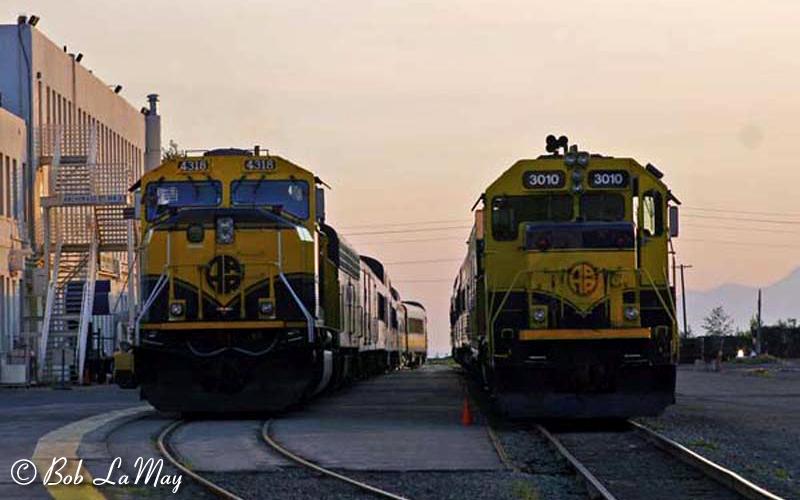
Several years ago, I posted links to a small series entitled The Parable of the Two Trains by Mark Webb, which was [and still is] the best analogy concerning the relationship between the old and new covenants I’d ever have come across. This modern-day parable will help you in your study of Scripture by explaining the big picture of the Biblical story, the differences between law and grace, as well as are some of the questions surrounding Covenant and Dispensational theology.
This parable is separated into 4 parts or 4 different posts so you can have good breaking points to ponder the Biblical Theology found in it. It will help you see the continuity and discontinuity between the Old Covenant and New Covenant, ss you see the covenantal conditions and the relationship between the mediators of the covenants. You will also gain an appreciation of how the biblical fits together (it’s continuity) between the Old and New Testaments, as well as how the covenantal differences (discontinuity) can be explained.
Read each of the 4 following posts:
Parable of the Two Trains – Part 1
Source Website
Author: Mark Webb Subject: New Covenant Theology
The relationship between the Old Covenant and the New Covenant forms one of the most difficult questions in all of theology. So said Jonathan Edwards. Many think they have it all figured out and are quick to tell us so. Yet easy, quick, and simplistic answers betray a shallowness of thinking. If you think the answer is easy, it’s most likely because you’ve not even understood the question. Our thinking tends to be governed by extremes rather than by balance. That is, we like to think in terms of “this or that” rather than in terms of “this and that”. The controversy at hand shows that same tendency, with “law” and “grace” often viewed as opposite ends of the spectrum rather than as complementary truths.
Read More…
Parable of the Two Trains – Part 2
Author: Mark Webb Subject: New Covenant Theology
Covenant Theology was described as one train on one track but with two engineers. Originally, Moses was the engineer as it chugged its way through the Old Testament times. Then, at the juncture of the Old and New ages, Christ replaces Moses as the new engineer. This model seeks to emphasize the continuity of Covenant Theology. There’s only one covenant (one track) but two administrators (two engineers)–first, Moses, and, later, Jesus. The passengers on this train can be called “Israel” or “the Church” interchangeably. Dispensationalism, on the other hand, was depicted as two separate trains on two separate tracks. One train has Moses as its engineer and runs on the Old Covenant track. Its passengers are called “Israel”. The other train has Jesus as its engineer and runs on the track of the New Covenant. Its passengers are called “the Church”.
Read More…
Parable of the Two Trains – Part 3
Author: Mark Webb Subject: New Covenant Theology
In addition to transition, a second principle is required of any covenantal model seeking to fit the Biblical data: transference. By this term, I simply mean what Christ declares at the conclusion of the parable of the householder in Matt. 21:43: “Therefore say I unto you, the kingdom of God shall be taken from you, and given to a nation bringing forth the fruits of it.” Note that privileges were to be taken from Israel and transferred to a new nation. What is the identity of this “new nation”? I suggest that it’s the one spoken of in I Peter 2:9, i.e. the Church. What I’m calling transference is termed by others the replacement motif. As the name implies, this viewpoint sees the church as a replacement for Israel in redemptive history. The benefits and blessings, promises and privileges, once the possession and future prospect of the nation of Israel, are now given to the Church (See Eph. 2:11-13).
Read More…
Parable of the Two Trains – Part 4
Author: Mark Webb Subject: New Covenant Theology
Covenant Theology tends to stress the continuity of the Old and New Testament eras. It sees but one covenant, administered at first by Moses and then by Christ. My model of this system uses a single train running on a single track. The train journeys through both the Old and New Testament ages, picking up passengers as it goes. At the juncture of these ages, a slight change does take place — Christ replaces Moses as the engineer. Other than this, it’s the same train, track, and people that ran through the earlier age. Dispensationalism, on the other hand, stresses the discontinuity of God’s dealings with man, breaking history up into distinct epochs. In each age, God deals with man by placing him under a self- contained covenantal system, having no necessary connection to the covenant of another age. I’ve illustrated this as two trains running on two separate, but parallel tracks. One is engineered by Moses and collects Israel. The other is engineered by Christ and collects the Church. The two systems are completely distinct.
Read More…
Comments are closed.